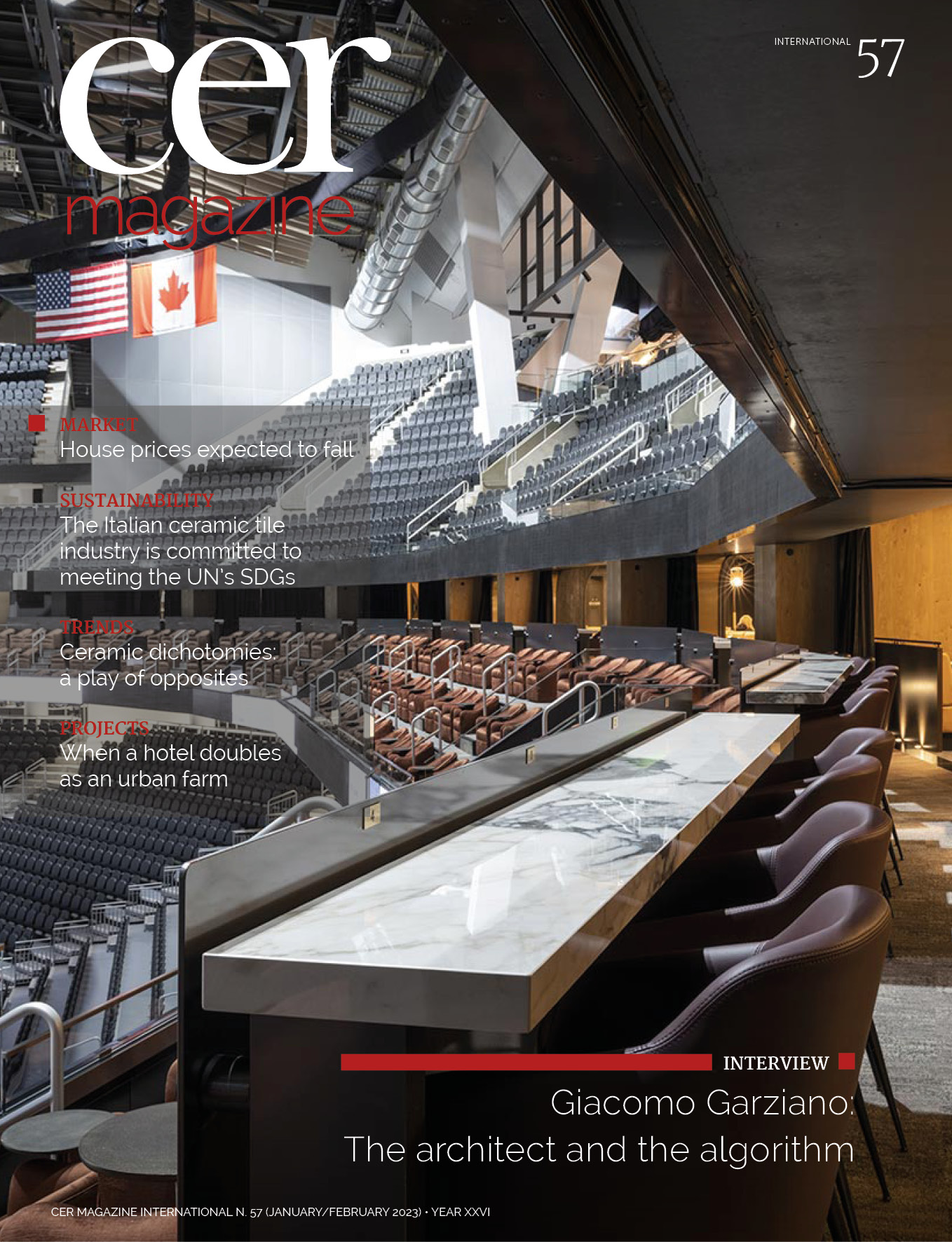Those magnificent 1980s Italian designer tiles
Back in the 1970s and 1980s, as quantity increasingly took precedence over quality and everything seemed to rush along with minimal attention to detail, two of the leading sectors of Italian excellence came together to forge an alliance of style and modernity. Combining ceramics with fashion, design with style, manufacturing with creativity, the result was a solid, long-term collaboration that enabled the Italian ceramic tile industry to update its collections and experiment with new designs.
At that time, the ceramic tile industry was in need of a revolution, and the advent of the innovative single-firing process, patented for the first time in Italy in the mid-1970s, proved to be one of the most important developments. This technique was able to create a thin but hardwearing product while reducing production and transport costs, and it proved ideal for projects carried out in collaboration with top fashion designers. Another key event of the period was the introduction of the rotary screen printing machine, which was capable of decorating tiles more quickly and with a much higher degree of precision and definition than in the past.
In little over a decade, Italian tile production grew dramatically, reaching its peak in 1974 with an output of 230 million square metres, 30% of which was exported. Ceramic tile established itself as a genuine mass product, bringing Italian ceramic expertise to international attention and leading to the launch of numerous initiatives promoting the product worldwide. The first of these was the opening of the Ceramic Tiles of Italy centre in New York in 1980, followed by similar centres in Paris and Düsseldorf.
While Italian tiles were being exported all over the world, a mood of aestheticism mixed with superficiality, socialisation mingled with indifference gradually began to establish itself in the glitzy 1980s Milan, the so-called “Milano da bere”. The term (literally “Drinking Milan”) was coined in 1985 by Marco Mignani for the advertising slogan of Amaro Ramazzotti and was a tongue-in-cheek reference to the Milanese social life of the period. It gradually established itself in the urban marketing language of the times as a byword for the duality that dominated the city of Milan in the 1980s: vibrancy, fun and modernity on the one hand; frivolity, individualism and transience on the other.
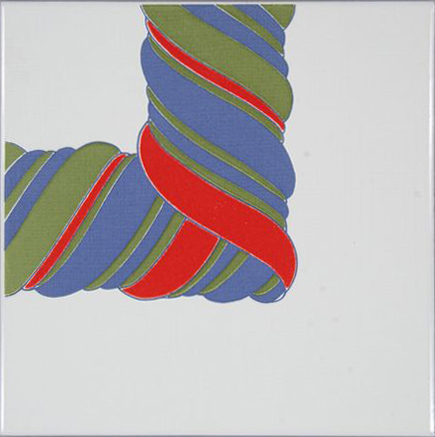
Roberta Di Camerino for Campeginese, 1981
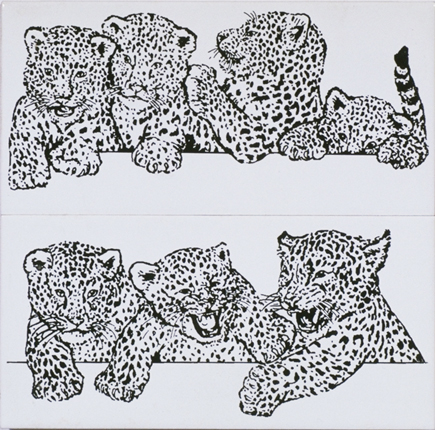
Krizia for Edilcuoghi, 1983
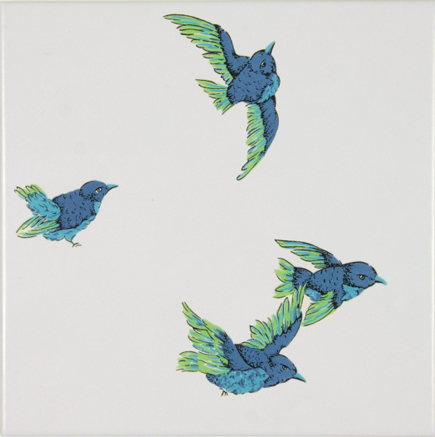
Valentino for Ceramiche Piemme, 1978
Against this backdrop of social progress and dynamic, relentless socialisation that propelled an avant-garde elite along the road to success, the ceramic tile industry began to feel the need to renew and modernise itself by experimenting with new collections. This led to numerous collaborations with some of the world’s leading fashion designers, beginning with Sassuolo-based tile producer Marazzi which developed a tile collection together with Paco Rabanne, Biki and Forquet (1969-1970). Following a number of experiments in the early 1970s, Valentino’s collection for Ceramica Piemme of Maranello (1978-1979) marked the start of a real revolution. From Gianni Versace to Krizia, from Laura Biagiotti to Trussardi, all top Italian (and non-Italian) fashion designers went on to design ceramic tiles, with the sole exception of Giorgio Armani.
These collaborations searched for a balance between functionality and aesthetics, improving the decorative qualities of tiles with the touch of elegance that is exclusive to the greatest fashion designers. Just as clothes clad and enhance the human body, so too tiles bring beauty and style to the walls and floors of our homes. Whether sumptuous decorations or simple geometric shapes, surface coverings with the same patterns as high-fashion garments became an increasingly common presence in Italian homes.
Observing these collections, it is obvious that the designers were imagining not so much an individual tile as an empty space that needed to be filled and illustrated with motifs originating from fine fabrics and furnishings present in the home. While tiles reflect the changes in living styles and culture of a given period, they also represent an evolving reality and become a mirror (as well as an icon) for the style of the times.
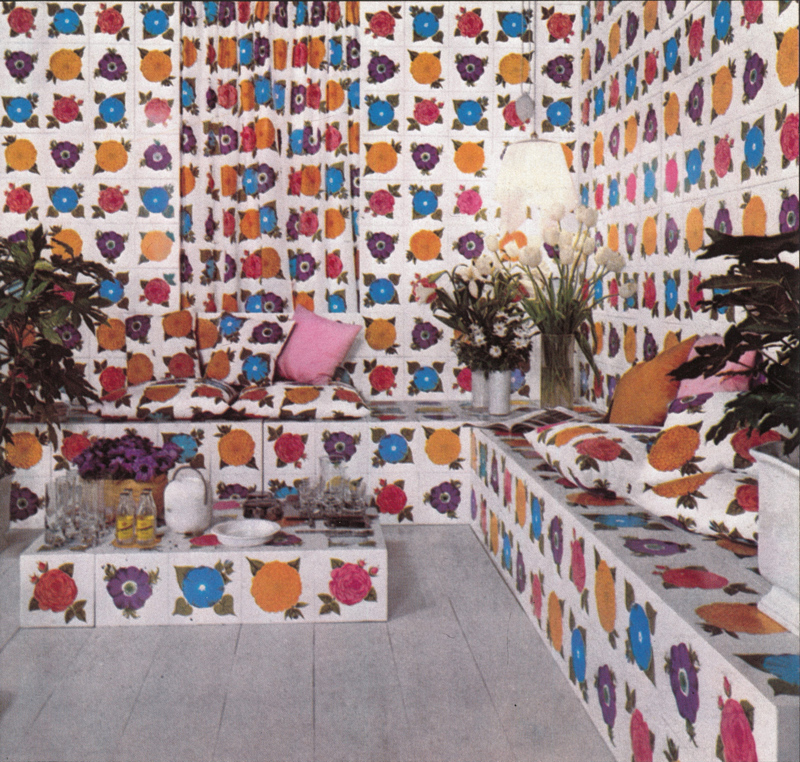
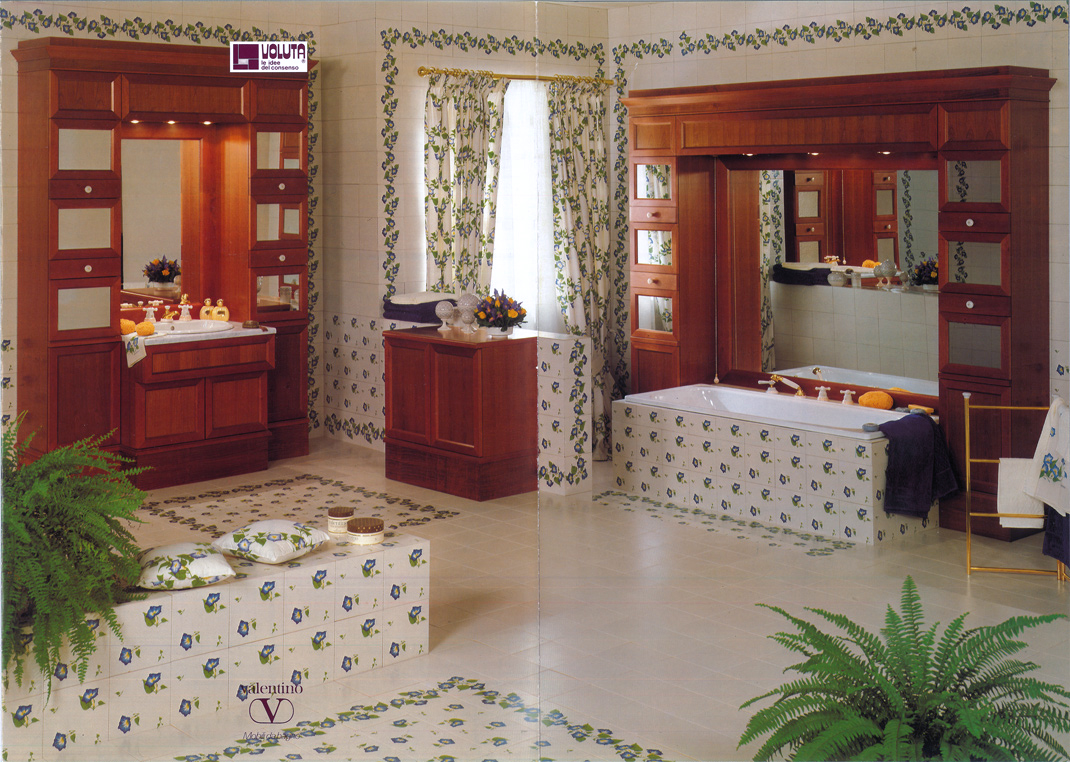
Two installations featuring ceramic tiles created by fashion designers: left, Ken Scott for Cedit (1976); right, Valentino for Ceramiche Piemme (1981)
In a period when appearance was more important than essence, the culture of imagery took on a vital role and every object acquired a hedonistic value. The evolving relationship between ceramic tiles and industrial design reflected the quest for aestheticism that was so typical of the 1980s in both daily life and the domestic environment.
Although the advent of fashion designers in the world of ceramic tiles revolutionised the industry, particularly in terms of improved aesthetic quality, the golden decade of the 1980s was not without its moments of crisis, one of which was when Spanish competitors introduced cheaper but lower quality products to the European market. The Italian industry’s answer can be summed up in a single word: innovation.
The result was porcelain stoneware, a material with similar aesthetic qualities to traditional ceramic but with many practical advantages that have enabled it to maintain its position as the best-selling type of tile in Italy even today.
Once again, the Italian ceramic industry proved to be one step ahead of its rivals. Thanks to innovation and a continuous search for perfection, tiles took on an increasingly important role in interior design, gradually moving away from collaborations with the top fashion designers of the time while continuing to satisfy consumer tastes as they shifted towards the rustic style typical of the 1990s.
The interaction between fashion and ceramics over the decades reflects the relationship between the home environment and an ever-changing society, an evolving narrative in which the main character is the unlimited potential of ceramic tile.
The ceramic industry is a cornerstone of the Italian economy, a fundamental part of the country’s history that continues with perseverance and determination to export an Italian-made product of unparalleled quality and sophistication all over the world.
February 2023





